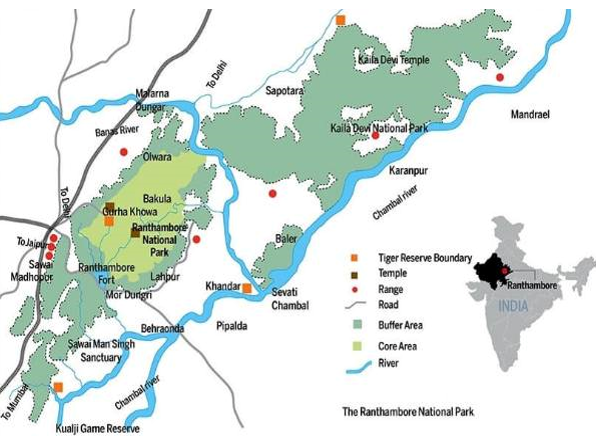Recently, Rajasthan’s Chief Wildlife Warden, reported that 25 out of the 75 tigers in Ranthambore National Park (RNP) have gone missing over the past year.
- This is the first instance of such a large number of tigers being officially reported missing in a single year.
- Park officials have stated that Ranthambore is facing challenges due to overcrowding of tigers, resulting in territorial conflicts.
Ranthambore N.P
- It is located in the Sawai Madhopur district of southeastern Rajasthan.

- Ranthambore National Park was established initially as Sawai Madhopur Game Sanctuary in 1955 by the Government of India. In 1973, it was declared as one of the Project Tiger reserves in India.
- Located at the junction of the Aravali and Vindhya hill ranges.
- It comprises of Ranthambore National Park, Sawai madhopur Sanctuary, Sawai Man Singh sanctuary, Keladevi sanctuary and part of National Gharial Sanctuary besides other forest areas.
- It is bounded to the north by the Banas River and to the south by the Chambal River.
- It is dry deciduous forests and open grassy meadow.
- Flora and fauna:
- The Dhok tree is the most dominant species, making up more than three-fourths of the forest’s vegetation. Other significant trees in the park include the Banyan, Peepal and Neem.
- Tiger, Leopard, Caracal, Jungle cat, Desert cat and Rusty spotted cat, hyena, wolf and jackal, Sloth bear, Chital, Sambar, Chinkara, Nilgai, Wild boar, Porcupine, sian paradise fly catcher, Indian skimmer, Pochards, Owls, Darters, Storks etc.

